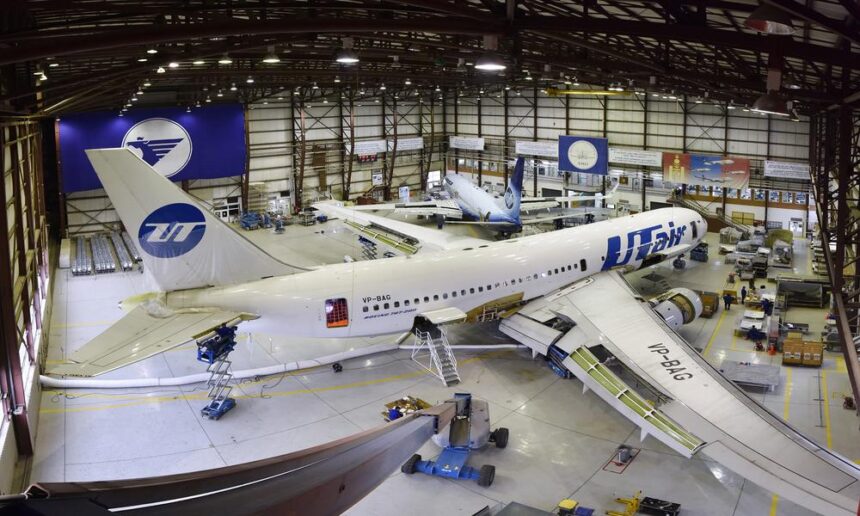Mongolians haven’t been paying adequate attention to an important business opportunity that is not dependent on commodity prices or permits from neighboring countries, has much less environmental implications, creates hundreds of jobs, attracts tens of millions of dollars’ investment, and diversifies the economy.
The Buyant Ukhaa airport has an opportunity to generate even more revenue than the mining industry if it successfully expands its operations in a disciplined way, ensuring its workforce is well prepared and relevant standards and regulations are complied with. This business opportunity is aircraft maintenance. Even though Mongolians have been in this business for many years and have recently entered the international market, we aren’t seeing the bigger picture and have neither set out a long term vision nor paid enough attention. Also, this business hasn’t been allowed enough freedom. However, as our international aviation services are going to be moved to the new airport at Khushig, a historic opportunity has come up for the aircraft maintenance business.
As the aviation industry grows at an aggressive pace globally and in the Asia-Pacific, there is increasingly a strong demand for all types of maintenance work for aircrafts. This means Mongolia now has a rare opportunity to take good advantage of our geographical location and vast territory.
Maintaining an aircraft costs more than buying one
The International Monetary Fund projects that global economic growth will be at an annual 2.8 percent in the long term. Randy Tinseth, Vice President at Boeing, suggests that the global passenger traffic will increase by an annual average of 4.7 percent, and freight turnover by 2 percent over the next twenty years. He also commented that there are about 24,000 aircraft in the global aviation industry today, and 18,500 of them are likely to be replaced over the next 20 years with 42,700 brand new ones expected to come in as well. It is expected that the new aircraft will cost 6.3 trillion USD while their maintenance costs will be at around 8.8 trillion USD. The fastest growth is expected in the Asia-Pacific, with China and India topping the list.
Over time, the purchase price of an aircraft is dwarfed by maintenance costs. Internationally, the supply for flight crews and maintenance capability has always struggled to keep up with demand, creating a shortage in the market.
The International Air Transport Association (IATA) has determined that 10-15 percent of the operational costs of international aviation companies go to maintenance. In 2015 alone, the Asia-Pacific countries spent 18 billion USD on maintenance, and this is expected to increase by 71 percent in the region in 2015-2025, and by 93 percent in China.
The Asia-Pacific region has several maintenance hubs in Taiwan, Shanghai, Singapore, Indonesia, the Philippines, Malaysia, Vietnam, and Thailand. Aviation companies with big fleets such as Korean Air and Asiana Air usually have their own maintenance units while companies that offer low cost, budget aviation services such as Easter Jet, Jeju air, T’Way, and Air Asia outsource maintenance units from third parties. Globally, 45 percent of aviation companies are outsourcing their aircraft overhaul services.
In order to be able to fly, aircraft must undergo frequent inspections, maintenance, and repair work (A-check happens every 45-70 days, C-check every 24 months, and D-check every 5-10 years). These services, including MRO maintenance, repair, and overhaul, are provided by a maintenance unit that meets all relevant requirements and certified by manufacturers.
Not too late to seize the opportunity
Aircraft maintenance services have been provided in Mongolia for many years. MIAT’s aircraft maintenance unit provides inspection, maintenance, and repair services to their Boeing B737 and B767 aircraft. This unit currently has a team of 170 engineers and technicians, who have been in charge of technical services and maintenance work for all aircraft that were ever used in Mongolia. Since 2005, this team has implemented the international ISO 9001:2008 standard, having been certified in safety and technical services by countries such as the European Union, South Korea, Thailand, and Turkey.
Mongolia’s aircraft maintenance unit works in two hangars that comprise 3,600 and 2,000 square meters, and provides daily maintenance services as well as complete overhaul. There are 14 workstations equipped with modern technology and toolsets. Given it is already approved by Boeing, this unit has been providing maintenance services not only to MIAT’s aircraft but also aircraft that belong to international companies. So far, our maintenance unit has worked with nine companies (including Thailand’s Orient Thai, Jet Asia Airways, and Asian Atlantic Airways, South Korea’s Eastar Jet, Jeju Air, and T’Way, Russia’s UT air and Alrosa Air, and Blue Star Aviation from the United States) from four countries and completed heavy maintenance services on five B737 and B767 aircraft as of 2017. A revenue of 11 billion MNT was generated from maintenance services in 2017 alone.
The target market of our maintenance unit comprises aviation companies who reside in locations within three hours flying time from Mongolia and who currently outsource their maintenance services. If you look at this customized region, there are about 258 of the same two Boeing aircraft, and the overall fleet size is increasing by 4-5 percent every year. The relatively low cost offered by our engineers and technicians positions us favorably in the market and gives us a competitive edge. The team is now working to acquire certification for maintenance and repair works for Airbus aircraft.
Smart step forward
We have opportunity to develop aircraft maintenance services into a major export industry. The first step is to build on our existing capabilities, provide more freedom to operate, and encourage turning the business into a public company going forward. In order to diversify their economy, Chile, which was overly dependent on mining, first made state investments in fruits, wine, meat, fishing, and forestry, and then carried out the task of making those companies public. These experiences have been widely studied by most of the Mongolian authorities who visited there.
We need to pursue a policy aimed at building a new hangar at the Khushig Valley airport and add several to Buyant Ukhaa, so that hangars can be allocated to specific aircraft models. In order to expand our capability, our top priority should be to provide services to Airbus aircraft, especially the A320 model, which would grow our market threefold. Also, we need to seek certification from China and the United States.
To offer comprehensive maintenance services, several approvals are needed, including Production Manufacturing Approval and Design Organization Approval. This also means there needs to be a permanent team who looks after the non-technical side of things such as improving revenue streams, introducing new technologies, undertaking research and development activities, and carrying out economic valuations.
Therefore, the government needs to build on our existing aircraft maintenance capabilities, provide policy support, make plenty of investment into Buyant Ukhaa, keep the existing infrastructure at the Chinggis Khaan airport and turn it into a proper maintenance complex. Also, there are countless other opportunities in creating a training center for pilots, engineers, and technicians, and assembling aircrafts.
If we develop Buyant Ukhaa airport into a diverse complex (as in an industrial park), there is a bright future ahead as it could become a highly competitive industry that can generate annual sales of 50 million USD and create over 1,000 specialized jobs.
When trying to diversify the economy, building on existing capability yields better results than starting from scratch.
2018.08.01
Trans. by B.Amar












